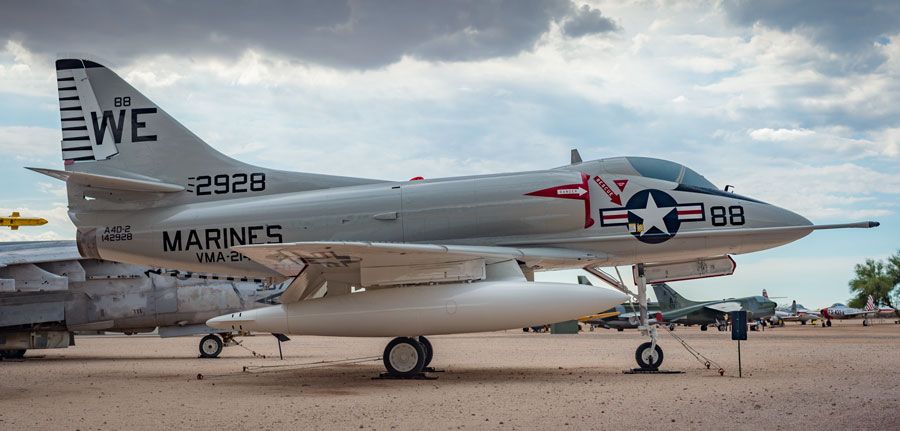Douglas A-4B Skyhawk
Design of the Skyhawk began in 1952 as a response to the increasing weight and decreasing performance of the early jet fighters. The Skyhawk was to be a lightweight, carrier based, nuclear capable, attack bomber for the U. S. Navy. The type’s first flight was on June 22, 1954 and testing quickly resulted in Navy contracts for the A4D-1 and A4D-2 versions of the plane. The Skyhawk was redesignated as the A-4 in 1962 with the A4D-2 becoming the A-4B. Skyhawks were one of the main Navy and Marine strike aircraft during the Vietnam War and flew from every American carrier as well as from land bases. Production of the Skyhawk ended in 1979, but A-4s continued to serve with the U. S. Navy in training roles until the early 1990s.
Wingspan | 27 ft 6 in. |
Length | 39 ft 5 in. |
Height | 15 ft |
Weight | 20,000 lbs (loaded) |
Maximum Speed | 664 MPH |
Service Ceiling | 20,100 ft |
Range | 1,160 miles |
Engines | One Wright J65-W-20 turbojet with 8,400 pounds of thrust |
Crew | 1 |
Manufacturer
Douglas
Markings
VMA-214 (Marine Attack Squadron 214), Kaneohe Bay, Hawaii, 1962
Serial Number
142928
Designation
A-4B
